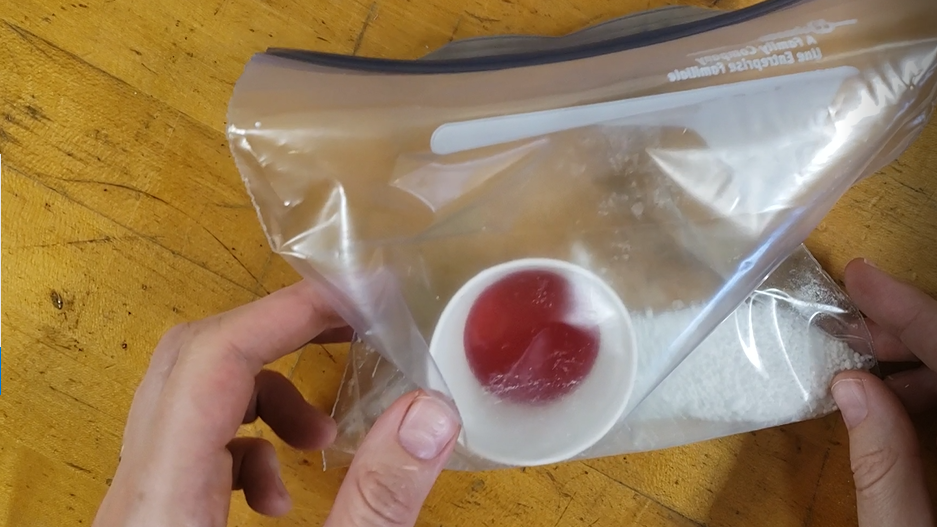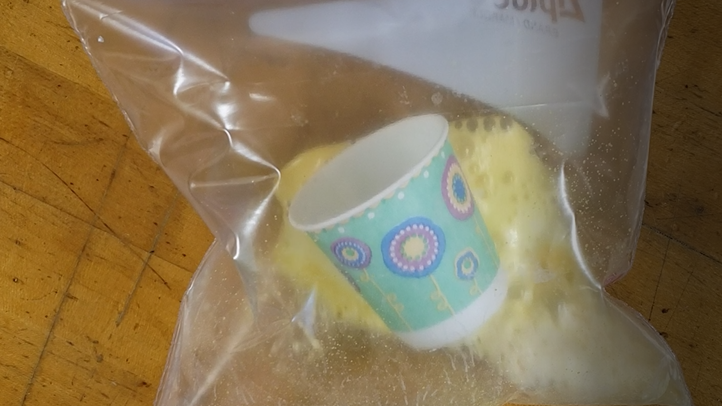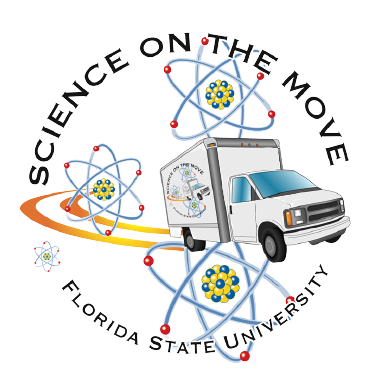Overview
This investigation combines simple materials to create a dramatic chemical change. Students unpack their observations to consider whether there is evidence of a chemical change and build an argument for their ideas using the Claim-Evidence-Reasoning structure. This activity is derived from the GEMS Chemical Reactions.
- Grades 4-8
- Requires basic familiarity with chemical changes.
- In person and virtual visit options available.
- For virtual visits, the teacher and/or students will have to supply the materials.
This investigation combines simple materials to create a dramatic chemical change. Students unpack their observations to consider whether there is evidence of a chemical change and build an argument for their ideas using the Claim-Evidence-Reasoning structure. This activity is derived from the GEMS Chemical Reactions.
- Grades 4-8
- Requires basic familiarity with chemical changes.
- In person and virtual visit options available.
- For virtual visits, the teacher and/or students will have to supply the materials.
Materials
-
Calcium Chloride
-
Baking Soda
-
Phenol Red Solution (Phenol Red powder and water)
-
Ziploc bag
-
Small paper cup
-
Pipette
-
Teaspoon
-
Calcium Chloride
-
Baking Soda
-
Phenol Red Solution (Phenol Red powder and water)
-
Ziploc bag
-
Small paper cup
-
Pipette
-
Teaspoon
Follow Up and Resources
This can be an effective launch point to dig deeper into physical and chemical changes. Check out the following:
-
Our Acid Rain investigation that considers physical and chemical changes.
-
-
Physical and Chemical Changes Virtual Lab from Glencoe/McGraw Hill.
This can be an effective launch point to dig deeper into physical and chemical changes. Check out the following:
-
Our Acid Rain investigation that considers physical and chemical changes.
-
Physical and Chemical Changes Virtual Lab from Glencoe/McGraw Hill.
Standards
Changes in Matter
-
SC.4.P.9.1: Identify some familiar changes in materials that result in other materials with different characteristics, such as decaying animal or plant matter, burning, rusting, and cooking.
-
SC.8.P.9.2: Differentiate between physical changes and chemical changes.
Energy
-
SC.912.P.10.7: Distinguish between endothermic and exothermic chemical processes.
Matter
-
SC.912.P.8.2 Differentiate between physical and chemical properties and physical and chemical changes of matter.
-
SC.912.P.8.7: Interpret formula representations of molecules and compounds in terms of composition and structure.
-
SC.912.P.8.9 Apply the mole concept and the law of conservation of mass to calculate quantities of chemicals participating in reactions.
The Practice Of Science
-
SC.5.N.1.1: Define a problem, use appropriate reference materials to support scientific understanding, plan and carry out scientific investigations of various types such as: systematic observations, experiments requiring the identification of variables, collecting and organizing data, interpreting data in charts, tables, and graphics, analyze information, make predictions, and defend conclusions.
-
SC.6.N.1.1:, SC.7.N.1.1:, SC.8.N.1.1: Define a problem from the sixth/seventh/eighth grade curriculum, use appropriate reference materials to support scientific understanding, plan and carry out scientific investigation of various types, such as systematic observations or experiments, identify variables, collect and organize data, interpret data in charts, tables, and graphics, analyze information, make predictions, and defend conclusions.
-
- Use tools to gather, analyze, and interpret data.
-
Pose answers, explanations, or descriptions of events.
Changes in Matter
-
SC.4.P.9.1: Identify some familiar changes in materials that result in other materials with different characteristics, such as decaying animal or plant matter, burning, rusting, and cooking.
-
SC.8.P.9.2: Differentiate between physical changes and chemical changes.
Energy
-
SC.912.P.10.7: Distinguish between endothermic and exothermic chemical processes.
Matter
-
SC.912.P.8.2 Differentiate between physical and chemical properties and physical and chemical changes of matter.
-
SC.912.P.8.7: Interpret formula representations of molecules and compounds in terms of composition and structure.
-
SC.912.P.8.9 Apply the mole concept and the law of conservation of mass to calculate quantities of chemicals participating in reactions.
The Practice Of Science
-
SC.5.N.1.1: Define a problem, use appropriate reference materials to support scientific understanding, plan and carry out scientific investigations of various types such as: systematic observations, experiments requiring the identification of variables, collecting and organizing data, interpreting data in charts, tables, and graphics, analyze information, make predictions, and defend conclusions.
-
SC.6.N.1.1:, SC.7.N.1.1:, SC.8.N.1.1: Define a problem from the sixth/seventh/eighth grade curriculum, use appropriate reference materials to support scientific understanding, plan and carry out scientific investigation of various types, such as systematic observations or experiments, identify variables, collect and organize data, interpret data in charts, tables, and graphics, analyze information, make predictions, and defend conclusions.
-
- Use tools to gather, analyze, and interpret data.
-
Pose answers, explanations, or descriptions of events.




